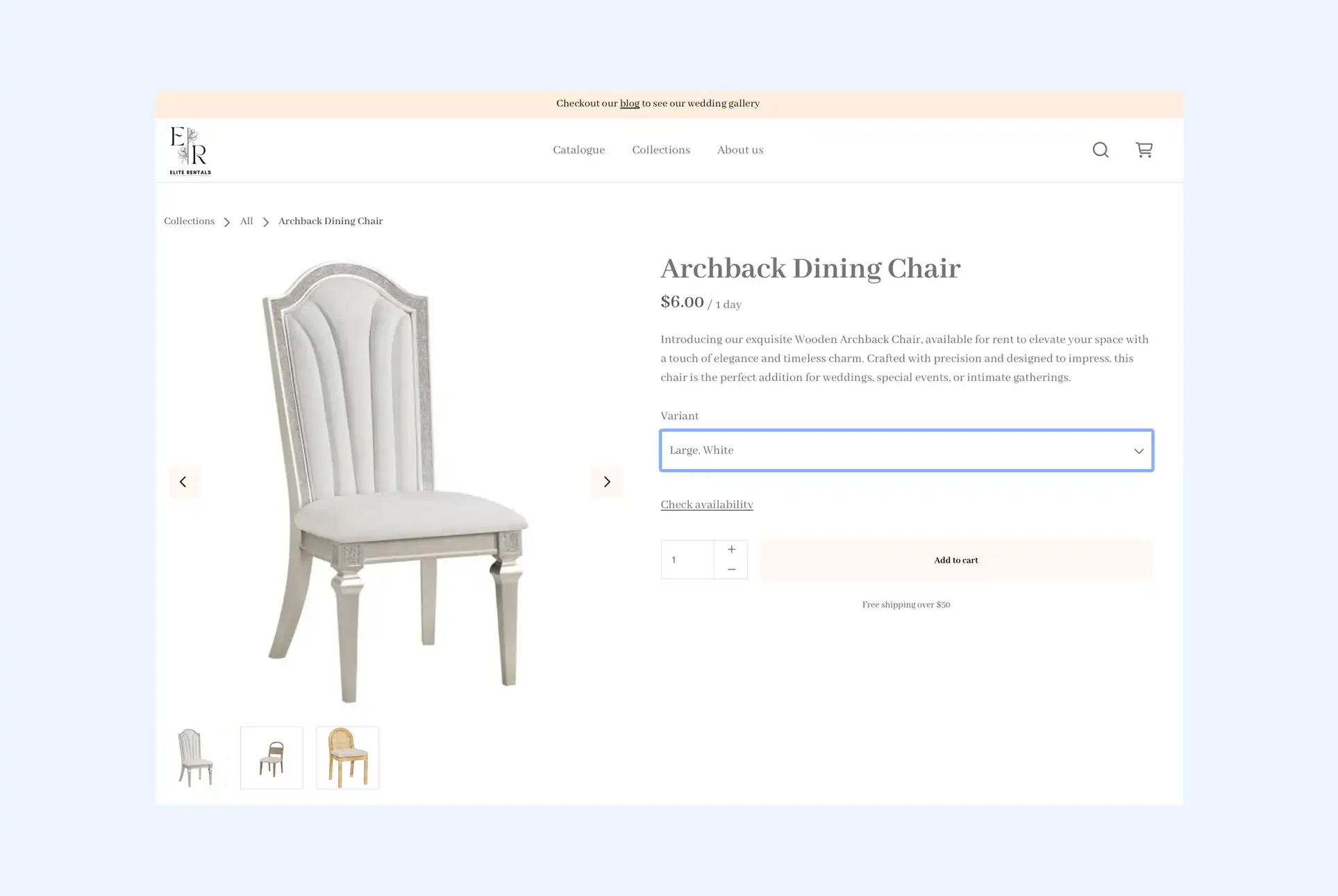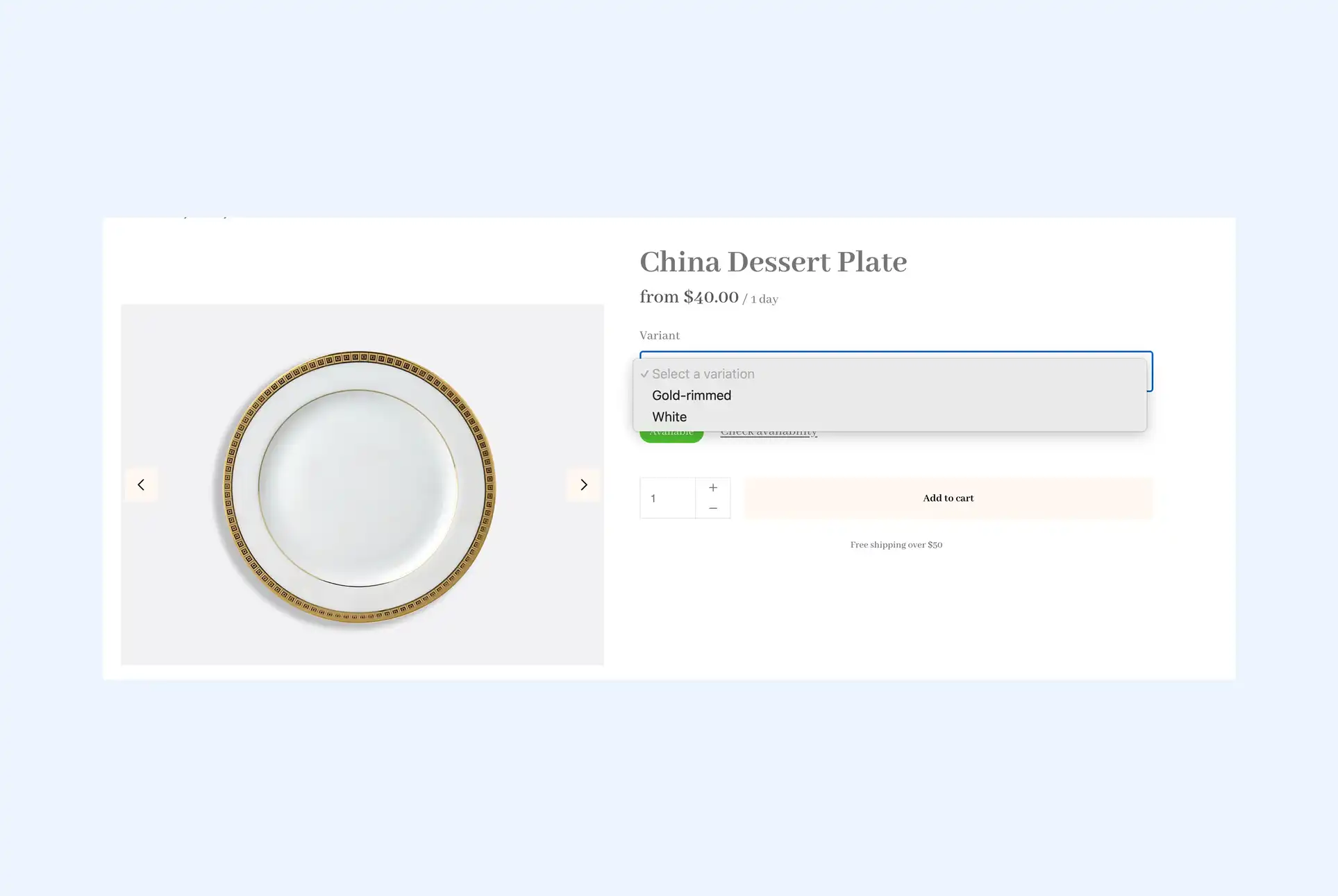Sometimes it can be challenging to rent products online. Unlike the pre-internet age, people can’t see an item or gauge what a business is like in person. So, they rely on the written content on a website to describe a product and the characteristics of the company renting it. This is the secret to renting more products and growing your rental business online.
Copywriting is an underrated and underestimated skill that most business owners don’t spend time learning and improving. The day-to-day tasks of a rental business can often be time-consuming, especially in a small business that perhaps has one of two people operating it. However, strong copywriting skills can convince a visitor to become a paying customer.
This guide will answer what good copywriting looks like, and how you can write with your potential customers in mind. When you finish reading it, you should understand the copywriting process and be able to write words that pay you back with more customers, revenue, and growth.
What is copywriting?
Simply put, copywriting is the process of writing content that convinces your target audience to complete the desired action. Whether than be visiting your website, joining your newsletter, or renting a product from you. It’s what you might see referred to as sales copy and is probably one of the biggest reasons you’ve ever bought or rented something in your life.
Writing persuasive content is the key to boosting rentals without having to invest money to acquire customers. Having great copywriting at every key touchpoint in your customer’s journey is one of the most effective ways to convert visitors into customers.
Copywriting can be found in every aspect of your online presence, from your website to social media and even emails. This will most likely include the homepage, product descriptions, category pages, about page, meta titles and descriptions, emails, social media posts, quotes, contracts, and invoices for rental businesses.
The most successful brands make every word matter, even down to the smallest fine print. When looking at how seriously a brand takes their customer experience, the attention paid to the copywriting less-visited pages like the FAQ and contact pages can tell you a lot. If a customer is super interested in your business, they will look here, and it’s a touchpoint that’s often forgotten.
Start your rental business for just $29/month
Put your toes in the water and test the demand in your area with a rental website for just $29/month.
How do you determine what content is “right”?
It may seem daunting at first, but the key to great copywriting is using your customers’ words to describe their problems. Content that performs requires research, and you need to know what your customer’s motivations are and the hurdles they are facing when looking to rent your products.
This dispels the myth that you need to be a very creative writer to create content that converts potential customers. Of course, there is room to be creative if you have the ability and desire, but you don’t need to dream up the right words to increases rentals; you need to uncover them.
You can use a four-step process to determine what content customers want to read and how it should be written. This includes defining your audience, conducting research, identifying patterns, and writing your content. These may sound like scary terms, but when you break them down, they are a process that is easy to follow.
Step 1: Define your audience
Content that converts meets the right person with the right message. This is why it’s essential to define your audience from the very beginning. For example, it can be helpful to think about whether your customers are visiting your website for the first time or if they are repeat customers.
This will help you to identify any friction customers face when making a reservation, why they chose you over your competitors, and how you can ensure they will return to you in the future. For example, if you’re writing from the perspective of new customers, you don’t want to assume that they already know what they’re doing.
You also need to consider the kind of people likely to rent from you and what they look like. This can be defined from characteristics like age, gender identity, lifestyle, and relationships. For example, your customers could be mostly middle-aged couples who enjoy spending time outdoors, or it could be college students who need access to high-quality equipment for a project.
Step 2: Conduct research
Once you know who you’re targeting, you need to conduct qualitative research to better understand their perspective. For example, it can be helpful to think of the interaction customers have before making a decision as a conversation with your content. Meanwhile, qualitative research gives you a chance to look at the answers to a test before it has even begun.
Knowing these answers allows you to turn them around and write content that provides an answer before a question has been asked. It makes a big difference in the quality of your content, so you shouldn’t skip doing in-depth research. Remember, your customers know themselves the best.
So, how do you go about collecting this data? Well, four main methods can prove fruitful in your mission to get into the head of a customer:
- You can interview your staff to get a picture of what customers say to them when picking up or returning items.
- You can reach out to past customers to ask them about their experiences.
- You can send out surveys to get answers to specific questions you may have.
- Finally, you can look through reviews and testimonials to understand how your customers describe their experiences.
Spending time on each of these research areas will give you a complete picture of what customers are looking for, the questions they have when making a booking and how they decide that you’re the best business to rent their desired products.
Step 3: Identify patterns
Once you have collected the data you need, you should have many reference points to create a plan for your copywriting. It may feel overwhelming at this point but remember, half the work is already done. The next step is to take a look a the data and try to identify patterns.
The easiest thing to begin with, is words or phrases that stand out or were repeated often across the data you have collected. This will help you to recognize what experiences your customers have in common. Next, you need to look for objections, benefits, questions, pain points, and friction points that are repeated. These are the questions/problems that you will be answering/solving in your content.
Discovering this information will help you understand how your audience speaks and the types of language they use. This is how your content will resonate with your audience and persuade them to make a reservation. It is also important not to insert any assumptions into your research as your copy should be based on what your audience told you and be persuasive.
Step 4: Write your content
You’ve done it! All the hard work is out of the way, and you can begin putting what you’ve learned into the content. This is where you’ll be able to start the journey of honing your copywriting skills and write content that your rental customers can identify with. Hopefully, this will lead to more reservations and growth for your rental business.
So, what are some of the essential things to remember when writing great content for your rental website?
- Replicate your customer’s tone of voice
- Sell the benefits of renting from you
- Add some customer reviews
- Avoid meaningless phrases
- Limit your use of adjectives
- Customers relate to stories, not facts
- Maintain a strong point of view
- Spend more time editing than writing
If you stick to these criteria, you will be well on your way to writing great content. Of course, you can’t become a great copywriter overnight, but you can hone your skills over time. Copywriting is about more than just listing the facts about the products you rent or customer experiences; it’s about listening to your audience.




